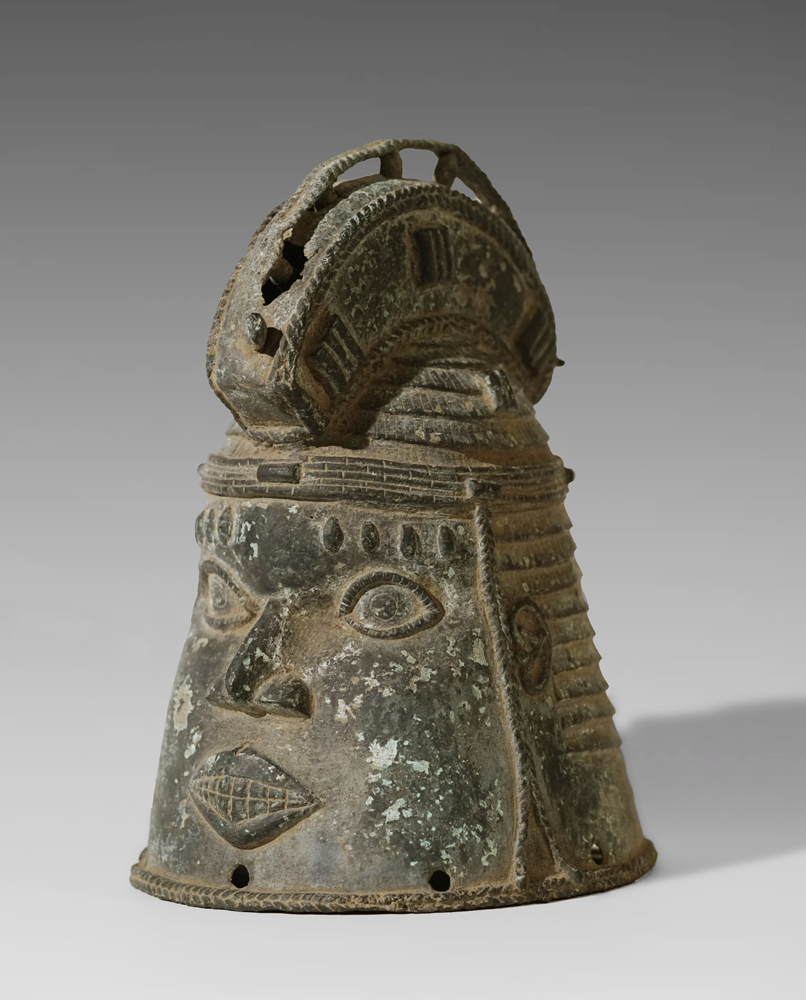|
A bronze head in the style of Benin, Nigeria, of conical shape, the mouth rhombic, teeth bared, below a nose with prominent nostrils, framed with rimmed eyes with engraved pupils, a stepped coiffure, above a prominent "The head served as a kind of helmet or headdress for the Oduduwa Mask Festival and is therefore often called the Oduduwa Mask. At this festival, several people dance back and forth to commemorate the founders of the Oranmiyan Royal Dynasty to emphasize the supremacy of the royal ancestors over the common folk. The name Oduduwa (or Odudua) means Creator God and refers to the founding myth of the current dynasty. Accordingly, Oduduwa, the king of the Yoruba kingdom of Ife, sent his son Oranmiyan to Benin to establish a royal dynasty there. While the head shown here symbolizes a woman, the male counterpart carries a staff-like attachment. The facial expression is more expressive than many other heads. The open mouth with clearly protruding teeth is a unique exception in Benin art. William Fagg sees in this style a connection to the style of the Ijo from the Niger Delta. According to Egharevba, the Beninese chronicler, this type of mask was not introduced until around the middle of the 18th century. Due to the dating of this mask to around 400 years, however, the question of the first use of such masks has to be asked again." Not mentioned on Digital Benin". Although there are certainly a number of bronzes of this type in private collections - including the Peter Herrmann collection. It is to be regretted that Digital Benin is limited almost exclusively to museum specimens and above all to those from the well-known punitive expedition of 1897. Science is certainly not doing a service with this restriction. But our cultural institutions - above all the Western museums - are primarily concerned with politics and not with scientific knowledge. In this respect, the current situation is similar to that of Felix von Luschan, who had to fight for the Benin bronzes to be an independent African art, and I would like to add that even the so-called "recent" Benin and Ife bronzes have the same significance from a scientific point of view, have the same cultural-historical status under the view of Horst Bredekamp ("iconic turn", Kunstgeschichte als historische Bildwissenschaft) who understands art history as visual science. Under this aspect a 500-year-old specimens of the same type of Benin or Ife sculpture and a recent exemplare tells stories that can´t be understood seperately but only in their continued context. sold |
 photo: wolfgang-jaenicke.com, for more information, please write us an e-mail with the identification number of the photo identification no. DSC05552.jpg |